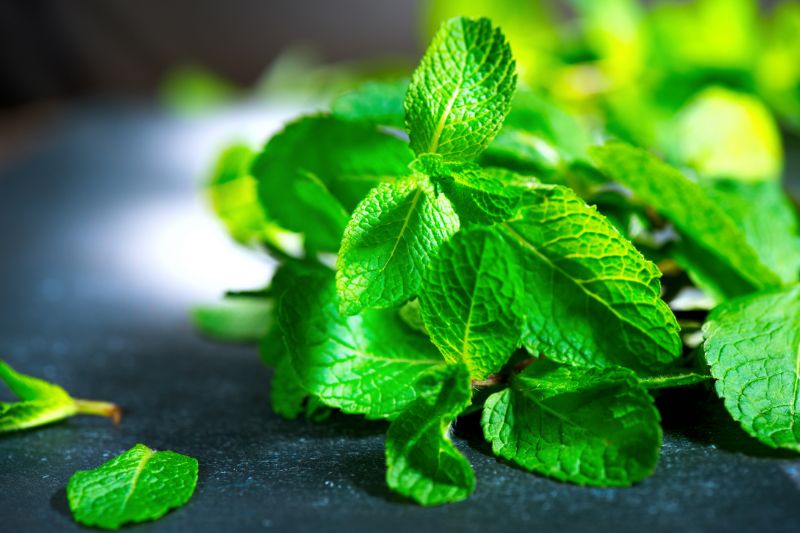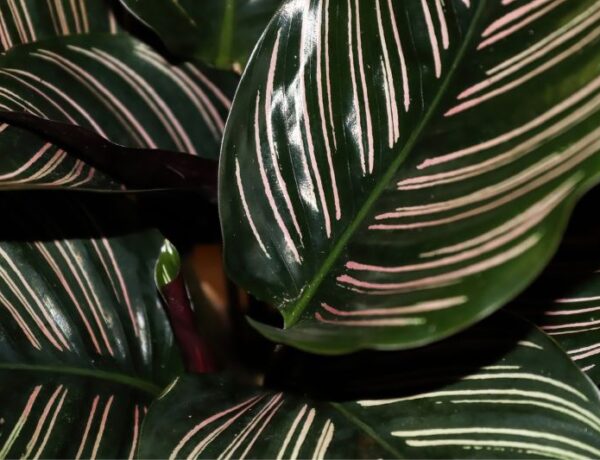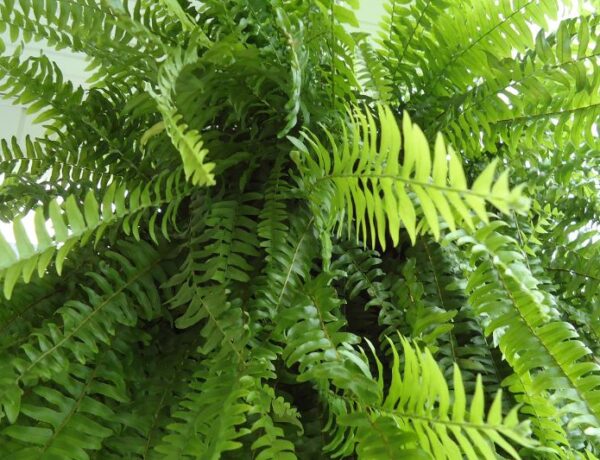Mint is a beloved herb that’s not only aromatic but also incredibly versatile. While often found flourishing in gardens, mint also adapts well to indoor conditions, making it a great option for year-round cultivation.
Whether you’re interested in spicing up your culinary endeavors or reaping the herb’s medicinal benefits, this comprehensive guide will take you through the process of growing, caring for, and harvesting mint indoors. Plus, find out how you can cultivate this herb even in the chilly winter months!
Table of Contents
1. General Information & Taxonomy
| Scientific name: | Mentha |
| Common names: | Mint |
| Native to: | Europe and Asia |
| Toxicity: | Non-toxic to humans and pets |
| Mature size: | 1-2 feet high, spreads indefinitely |
| Category: | Herbaceous Perennial |
| Growth Rate: | Fast |
| Hardiness: | USDA Zones 3-9 |
| When to plant it indoors: | Anytime, ideally in Spring |
| Culinary uses: | Teas, desserts, sauces, salads |
| Medicinal uses: | Digestive aid, anti-inflammatory, aromatherapy |

2. Growing Mint Indoors from Seeds
Seedling Care
- Preparation: Start by purchasing high-quality mint seeds from a reputable source. Fill a seed tray or small pots with seed-starting mix, which should be moist but not soggy.
- Planting: Sprinkle the mint seeds evenly over the soil, covering them lightly with a thin layer of soil or vermiculite.
- Location: Place the seed tray in a warm, sunny location, such as a south-facing windowsill.
Germination Time:
- Mint seeds typically take 10-15 days to germinate.
Optimal Soil for Germination:
- A light, well-draining soil with a pH between 6.0 and 7.0 is ideal.
After Germination:
- Once the seedlings have two sets of true leaves, transplant them into larger pots filled with potting mix.
3. Growing Mint Indoors from Cuttings
How to Take a Cutting
- Choose a healthy mint plant and cut a 4-6 inch stem just below a node (where a leaf joins the stem).
Rooting Process
- Water Rooting: Place the cutting in a glass of water, ensuring that the node is submerged. Change the water every few days.
- Soil Rooting: Alternatively, you can plant the cutting directly into a pot filled with moist, well-draining soil.
Root Development:
- Expect roots to develop in 2-3 weeks.
Transplanting:
- Once the roots are established, transplant the cutting into a larger pot or directly into your garden if preferred.
4. Mint Care & Growing Requirements Indoors
» Watering
Mint prefers soil that is consistently moist but not waterlogged. As a general rule, if the top of the soil feels dry to the touch, then it’s time for a good soak.
» Light
Mint loves bright, indirect light but can also tolerate some direct sunlight. A south or west-facing windowsill usually provides adequate natural light.
However, if natural light is insufficient, consider using artificial grow lights, particularly during winter months, as too little light can result in leggy plants with weak stems.
» Soil
The soil used for your indoor mint plant should be well-draining and rich in organic matter. A slightly acidic to neutral pH range (6.0 to 7.0) is ideal for mint.
» Temperature
Mint thrives in average household temperatures, usually between 60-75°F (15-24°C). It can tolerate slight fluctuations but should be protected from extreme conditions.
» Humidity
Mint is relatively tolerant of a wide range of humidity levels but prefers higher humidity. You can increase the humidity levels by using a humidifier, the classic pebble tray method or just by grouping high-humidity loving plants together.
» Fertilizer
Nutrition is the final piece of the puzzle for a thriving mint plant. A balanced, all-purpose liquid fertilizer applied every 4-6 weeks should suffice.
5. When and How to Harvest Your Mint

You can start harvesting your mint as soon as the plant reaches about 6 inches (15 cm) in height. Consistent harvesting not only provides you with fresh leaves but also encourages the plant to grow more vigorously, resulting in a fuller, bushier appearance.
Harvesting Tips:
- Always harvest in the morning when the plant’s essential oils are at their peak, making the leaves more aromatic and flavorful.
- Use clean, sharp scissors or garden shears to snip the stems just above a node or set of leaves. This promotes more branching and new growth.
- Try not to remove more than one-third of the plant at a single harvest to allow the plant enough leaves to continue its growth cycle.
Conclusion
Growing mint indoors is a rewarding experience that allows you to enjoy this versatile herb year-round. With the right care and conditions, you can even continue to cultivate mint throughout the winter.
Whether you started from seeds or cuttings, your indoor mint plant will provide you with a continuous supply of fresh leaves for culinary and medicinal uses.






No Comments